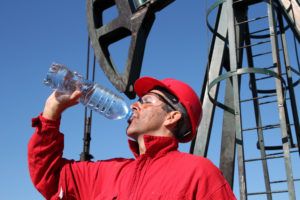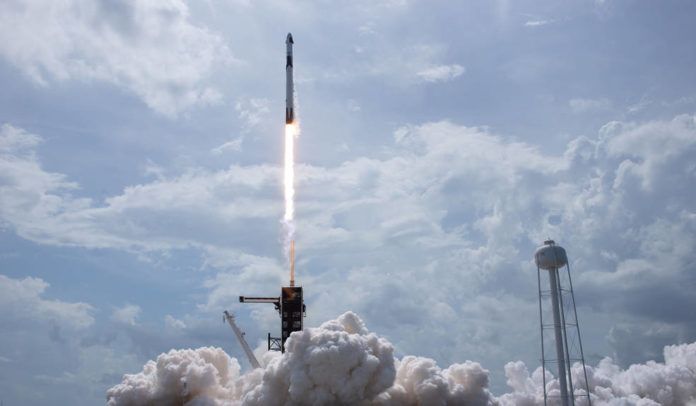On May 27, 2020, much of the world watched with anticipation as the SpaceX Falcon 9 was set to launch and carry two NASA astronauts to the International Space Station (ISS). About 15 minutes out from the scheduled ignition time, the launch was scrubbed and rescheduled for three days later.
Imagine being the person to make that call. The entire organization has been literally counting down the months, days, hours, minutes, and seconds until the launch. Hundreds of people have been working toward the 1633 EST moment. The decision to delay the launch by three days must have come with incredible financial costs. Countless people around the world were eagerly watching. The POTUS and the VPOTUS had flown in specifically to witness the event. Two astronauts have been strapped in and patiently waiting for several hours; just itching to go. There was even a good chance the weather wouldn’t impact the mission at all. In fact, it was virtually assured that if the launch were a mere 10 minutes later it would all be clear. But you can’t wait 10 minutes. The ISS must be in an exact spot in its orbit at the precise moment of launch to rendezvous with the rocket. It’s now or wait three days until the ISS is back in the right spot.
There are a TON of influences all screaming “go, go, go” and you’re the one person who decides to say “stop.” It must have been gut-wrenching to make that decision 15 minutes before launch.
That’s exactly why the decision was made years earlier.
NASA has very strict and very clear criteria for the weather conditions that will stop a launch. Here are just a few: Do not launch if the sustained wind at the 162-ft level of the launch pad exceeds 30 mph. Do not launch for 30 minutes after lightning is observed within 10 nautical miles of the launch pad or flight path. Do not launch within 10 nautical miles of a detached thunderstorm anvil cloud.
No one tried to rationalize going ahead with the launch by saying “It’s been 29 minutes since the last lightning strike, close enough.” Or “That anvil cloud is 9.9 miles away, we should be ok.” They set some thresholds and when they were reached, they took the prescribed action. The in-the-moment decision wasn’t that hard because the decision wasn’t made under the influences of the moment. The decisions were made ahead of time to remove the pressure to rationalize risky choices. They set a plan in place to follow the data and reacted accordingly.
How often do we compromise or rationalize under the pressures of the moment? We’re coming up on the hot months. Will we be so eager to make it happen that we won’t let heat index numbers drive our in-the-moment decisions? According to OSHA the following heat index temperatures should drive the following actions:

• <91⁰ F—Provide drinking water, ensure medical services are available, plan ahead for higher temperatures, wear sunscreen, and acclimatize workers.
• 91⁰ F to 103⁰ F—Encourage workers to drink 4 cups of water per hour, review heat related illness training with workers, provide frequent breaks in cool shaded areas, acclimatize workers, and instruct peers and supervisors to watch for signs of heat illnesses.
• 103⁰ F to 115⁰F—Alert workers of high risk conditions, continue drinking 4 cups of water per hour, limit physical exertion, establish and enforce work/rest schedules, adjust work activities, use cooling techniques, and watch and communicate with workers at all times.
>115⁰ F—Reschedule non-essential activities, move essential work to the coolest part of the day, alert workers of extreme hazards, establish a water drinking schedule of 4 cups of water per hour, enforce work/rest schedule, conduct physiological monitoring (pulses, temperatures, etc.), and stop essential work if control methods are inadequate or unavailable.
Decide now that when you hit a number, you take the action. Don’t rationalize or compromise; let the numbers decide your course of action so you don’t have to think about it. NASA didn’t think about safety and scrubbing the launch, because they decided to watch the data and respond per the plan that was put in place without the pressures of the moment. They stopped work, regrouped, and had a successful launch three days later when the weather allowed it.
Toolbox Talks offers quick insights and thoughts to use for your toolbox (tailboard) talks. Dave Sowers is a founding member of Knowledge Vine, a veteran-owned human performance training and consulting organization that strives to reduce the frequency and severity of human errors in the workplace. He has almost 30 years of experience in power generation and the utility industry. He is a veteran of U.S. Navy Nuclear Power Program and holds a bachelor’s degree in resources management and a master’s degree in both management and emergency management and homeland security.



